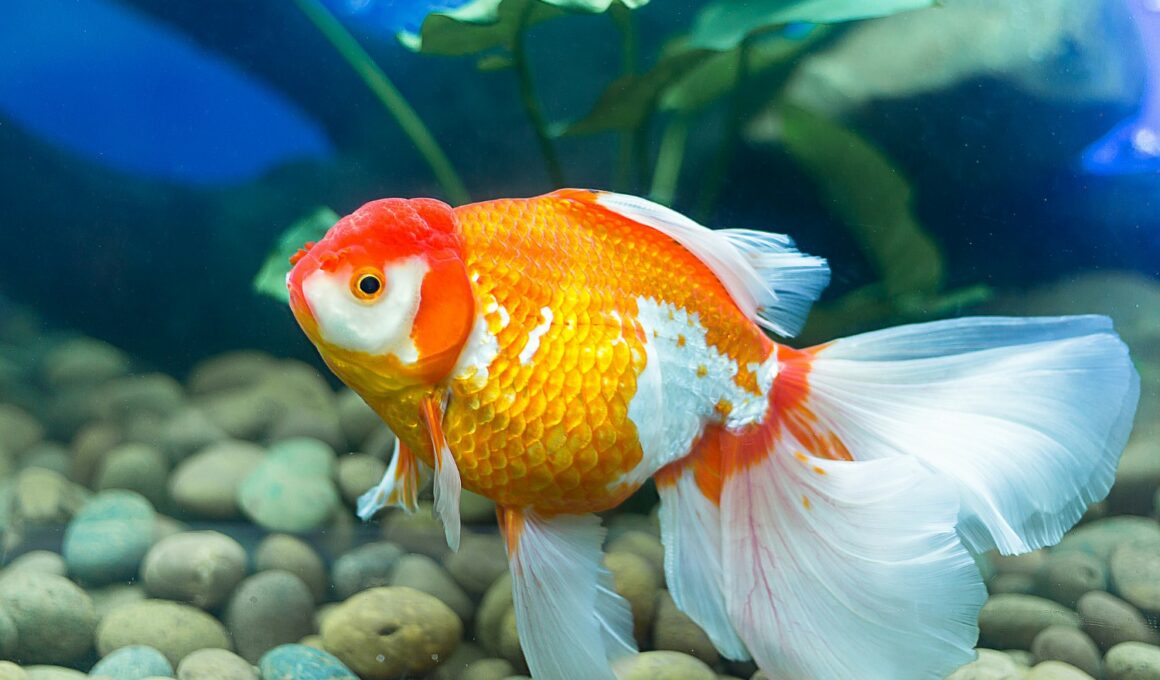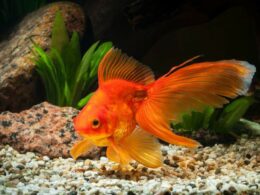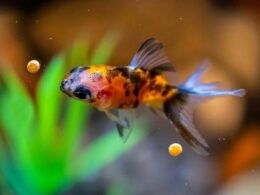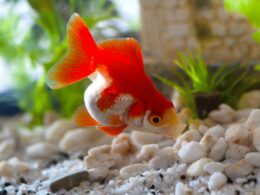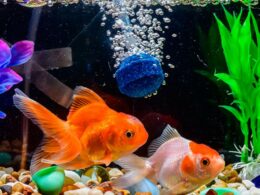In this article Show
Goldfish, with their shimmering scales and playful antics, have charmed their way into many homes and hearts worldwide.
If you trace back their history, they were once revered by ancient Chinese emperors, making their domestication not just a recent fascination but a centuries-old tradition.
However, with such widespread popularity, numerous myths about their care have sprung up. I’ve often encountered passionate fish keepers who genuinely want the best for their goldfish but are misguided by outdated or oversimplified advice.
As someone who’s spent countless hours observing, studying, and nurturing various aquatic species, including these beautiful finned friends, I can’t emphasize enough the importance of proper goldfish care. It’s not just about extending their lifespan; it’s about enhancing their quality of life.
So, let’s embark on this journey together. Whether you’re a first-time goldfish parent or someone looking to refresh your knowledge, I’m here to guide you through the intricacies of keeping your goldfish not just alive, but thriving. Dive in with me!
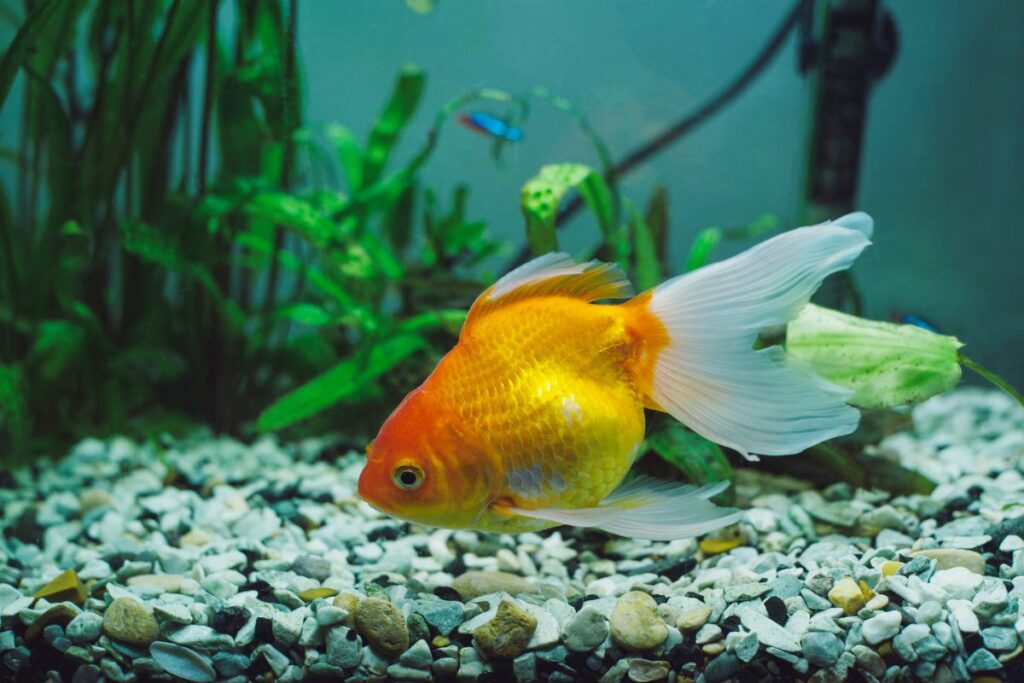
Goldfish Species & Varieties
Goldfish might all seem quite similar to the casual observer, but those in the know can appreciate the diverse array of species and their unique characteristics.
Over the centuries, selective breeding has led to the development of several distinct goldfish varieties, each with its own set of traits and requirements. Here’s a breakdown of some of the most popular ones:
1. Common Goldfish
- Appearance: Bright orange or yellowish-gold color, streamlined body, and a single, flowing tail.
- Origin: Closest in appearance to the wild carp ancestors.
- Special Care: This robust type is often recommended for beginners.
2. Comet Goldfish
- Appearance: Sleek body similar to the common goldfish but with a much longer, deeply forked tail.
- Origin: Originated in the USA in the late 1800s.
- Special Care: Active swimmers; they need ample space to showcase their agility.
3. Fantail Goldfish
- Appearance: Short, rounded body with a double tail (split in the middle) that fans out, resembling a fan.
- Origin: One of the earliest fancy goldfish breeds from China.
- Special Care: A hardy variety but can be sensitive to extreme cold.
4. Oranda Goldfish
- Appearance: Noted for its ‘wen’ or raspberry-like growth on its head, which can become quite pronounced.
- Origin: Developed in Japan from Chinese lion head stock.
- Special Care: The wen might sometimes obstruct vision, so keep sharp objects out of the tank.
5. Ryukin Goldfish
- Appearance: Deep-bodied fish with a pronounced hump just behind the head and a flowing double tail.
- Origin: Thought to have arrived in Japan from China’s Ryukyu Islands.
- Special Care: Due to their body shape, they can be prone to buoyancy issues; feed them a balanced diet.
The Ideal Goldfish Tank Setup
Goldfish aren’t just any ordinary fish. Despite their widespread popularity, especially among beginners, they come with unique requirements that can’t be overlooked. While they’re often depicted in tiny bowls in popular culture, such an environment is far from ideal. Let’s dive into creating the optimal tank setup for your goldfish.
1. Tank Size
Goldfish bowls are cramped, provide inadequate oxygen, and often result in unhealthy living conditions. A spacious tank ensures better water quality and a healthier environment.
A single goldfish requires at least 20 gallons of water, with an additional 10 gallons for each subsequent fish. Remember, goldfish grow – and they can grow big!
2. Substrate & Decorations
Smooth gravel or sand are ideal. Large pebbles prevent goldfish from trying to swallow them, while sand is soft and safe.
Go for live plants like Anubias, Java Fern, or Elodea, which can withstand goldfish nibbling. Ensure that any ornaments or decorations don’t have sharp edges to prevent injuries.
3. Filtration System
Goldfish produce a significant amount of waste. A powerful filter helps maintain water clarity, removes toxins, and ensures a continuous supply of oxygen. Canister filters or powerful hang-on-back filters are ideal due to their efficiency. Ensure that the filter processes the tank’s total volume at least 4-5 times an hour.
4. Temperature & Lighting
Goldfish thrive in temperatures between 65°F and 75°F (18°C to 24°C). While they can tolerate slight variations, sudden changes can be stressful. A regular daylight cycle of 10-12 hours is ideal for goldfish. Consider using aquarium LED lights, which mimic natural sunlight without overheating the water.
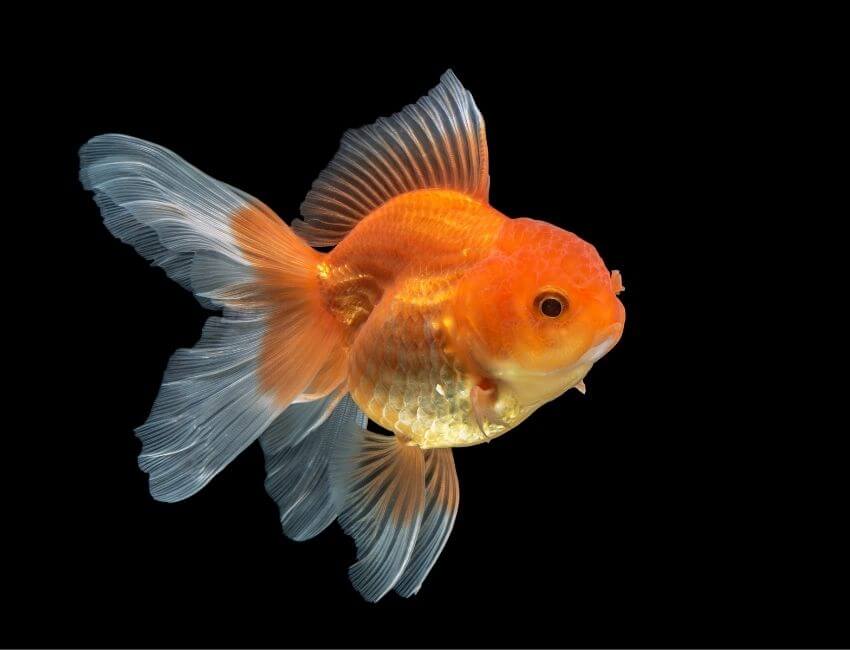
Diet & Nutrition
Feeding your goldfish might seem like a straightforward task, but there’s more to it than meets the eye. A well-balanced diet is crucial not only for their growth but also for their vibrant coloration and overall health. Here’s what you should know:
1. Essential Nutrients for Goldfish
- Proteins: As omnivores, goldfish require proteins for growth. Look for foods containing fish meal, shrimp, or krill as primary ingredients.
- Carbohydrates: While they can digest carbs, it shouldn’t be the main component of their diet. Overfeeding with carbohydrate-rich foods can lead to health issues.
- Vitamins & Minerals: Essential for a robust immune system. Quality commercial foods usually contain necessary vitamins and minerals, but natural supplementation can be beneficial.
2. Commercial Food vs. Homemade Diets
- Flakes & Pellets: Widely available and formulated for goldfish. Opt for high-quality brands, and ensure the pellet size is appropriate for your fish. Remember to soak pellets briefly before feeding to prevent buoyancy issues.
- Gel Foods: These are nutrient-rich and can be easily digested. Some brands offer gel food, or you can make your own at home using fresh ingredients.
- Homemade Diets: Ingredients like peas, spinach, or finely chopped seafood can be incorporated. However, always ensure that the food is fresh and appropriately sized.
3. Safe Vegetables & Treats
- Veggies: Blanched peas (shelled), lettuce, zucchini, and spinach are favorites. They provide necessary fiber and can help prevent constipation.
- Treats: Brine shrimp, bloodworms, and daphnia are protein-rich treats. They should be given sparingly and not as a primary food source.
4. How Often & How Much to Feed
- Frequency: Young goldfish grow rapidly and can be fed 2-3 times a day, while adults thrive with once or twice daily feedings.
- Quantity: Offer only as much food as they can consume in 2-3 minutes. Overfeeding can lead to poor water quality and health problems.
A common mistake, especially among new goldfish keepers, is overfeeding. It’s crucial to monitor your fish during feeding times and adjust portions based on their appetite. A varied diet, combined with careful observation, will ensure that your goldfish receive the nutrition they need to thrive.
Goldfish Lifespan & Health
The sight of a goldfish elegantly swimming in its tank is mesmerizing, but it’s essential to understand that these beautiful creatures, when taken care of properly, can share many years with us. Let’s explore the typical lifespan of goldfish and the key aspects of their health:
1. Average Lifespan with Proper Care
Goldfish are renowned for their long lives compared to other ornamental fish. With optimal care, the common goldfish can live anywhere from 10 to 15 years, while some varieties, under exceptional conditions, can even reach beyond 20 years.
2. Common Goldfish Diseases and Prevention
- Ich or White Spot Disease: Appears as tiny white spots on the fish’s skin and gills. It can be treated with commercial ich remedies and raising the water temperature slightly.
- Fin Rot: Deterioration of the fish’s fins, often due to poor water quality. Improve water conditions and consider antibacterial treatments.
- Swim Bladder Disease: Goldfish might struggle to maintain buoyancy. This can result from overfeeding or a diet lacking fiber. Offer peas to alleviate constipation and consider adjusting their diet.
- Prevention is Key: Regular water changes, not overfeeding, and quarantining new fish before introducing them to the main tank can prevent a majority of diseases.
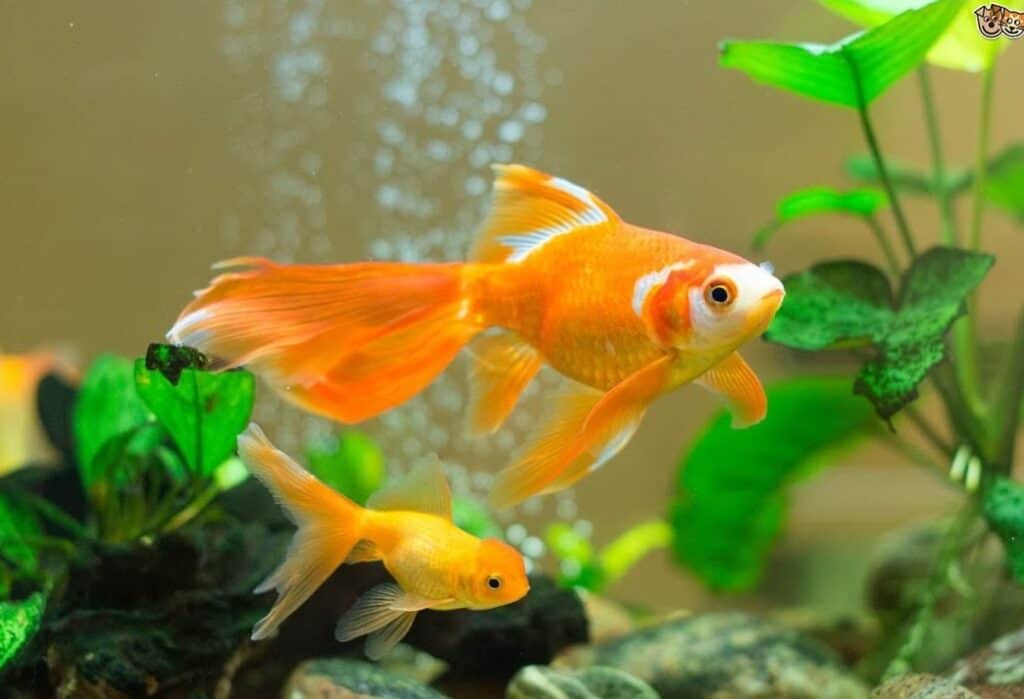
3. Signs of a Healthy Goldfish
- Active Behavior: A healthy goldfish is curious and active, exploring its environment.
- Vibrant Coloration: While color can vary, look for consistent, bright colors without sudden patches of discoloration.
- Clear Eyes and Fins: Their eyes should be clear and free from cloudiness, while fins should be spread out and undamaged.
- Regular Eating Habits: A sudden lack of appetite can be a sign of stress or illness.
- The health of your goldfish is directly linked to the environment you provide and the care you offer. While goldfish are hardy creatures, it’s up to us, as caretakers, to ensure they live in conditions conducive to long, healthy lives.
Maintenance & Cleaning
Just like our own living spaces, a goldfish tank requires regular upkeep to ensure it remains a healthy environment for its inhabitants. While goldfish are relatively hardy, the clarity and quality of their water play a significant role in their overall well-being. Here’s a guide to keeping your goldfish’s home in pristine condition:
1. Weekly Maintenance Routine
- Check Water Parameters: Using a water testing kit, regularly monitor ammonia, nitrite, nitrate, and pH levels. Keeping these parameters stable is key to preventing many common fish diseases.
- Inspect Equipment: Ensure filters, heaters, and lights are functioning correctly. A malfunctioning device can rapidly change the tank’s conditions.
2. Water Change Frequency and Tips
- Regular Water Changes: Replacing 20-30% of the tank’s water weekly is essential. This helps dilute waste products and replenish essential minerals.
- Using a Siphon: A gravel vacuum or siphon helps remove debris trapped in the substrate during water changes.
- Water Conditioners: Always treat new water with a water conditioner to neutralize chlorine and chloramines, which are harmful to fish.
- Match Temperature and pH: When adding new water, ensure it’s close to the tank’s temperature and pH to avoid shocking the fish.
3. Keeping the Tank Environment Stable
- Avoid Overfeeding: Excess food decomposes, affecting water quality. Feed only what your goldfish can consume in 2-3 minutes.
- Trim and Prune: If you have live plants, regularly trim dead or decaying leaves, as they can contribute to water pollution.
- Filter Maintenance: Clean and replace filter media as per the manufacturer’s instructions. A well-functioning filter aids in breaking down waste and keeping the water clear.
4. Periodic Deep Cleaning
- Avoid Complete Water Changes: It might be tempting to change all the water and scrub everything down, but this can disrupt beneficial bacteria colonies and stress the fish.
- Cleaning Decorations: Over time, algae or slime might build up on ornaments. Remove and scrub them with a soft brush in tank water.
- Substrate Cleaning: If using gravel, consider giving it a thorough rinse every few months to get rid of accumulated debris. Sand substrates can be gently stirred to release trapped gases.
Social Behavior & Tank Mates
One of the endearing qualities of goldfish is their social nature. Observing them interact can be both entertaining and informative. However, when considering tank mates, it’s essential to understand their behavior and which species can coexist harmoniously with them.
1. Are Goldfish Social?
- Group Dynamics: Goldfish are indeed sociable creatures. They often thrive in groups and can show signs of social interaction, swimming and exploring their environment together.
- Solitary vs. Group: While they do well in groups, solitary goldfish can also live healthily. However, a companion often enhances their activity and overall well-being.
2. Compatible Tank Mates
- Temperament Match: The ideal tank mates are those that aren’t aggressive and won’t compete fiercely with goldfish for food.
- Species to Consider:
- White Cloud Mountain Minnows: Peaceful and thrive in similar water temperatures.
- Zebra Danios: Active swimmers that can coexist with goldfish without bothering them.
- Bristlenose Plecos: Useful for algae control and generally non-aggressive.
- Avoiding Predators: Steer clear of species known to be fin-nippers or those that might see goldfish as a potential snack.
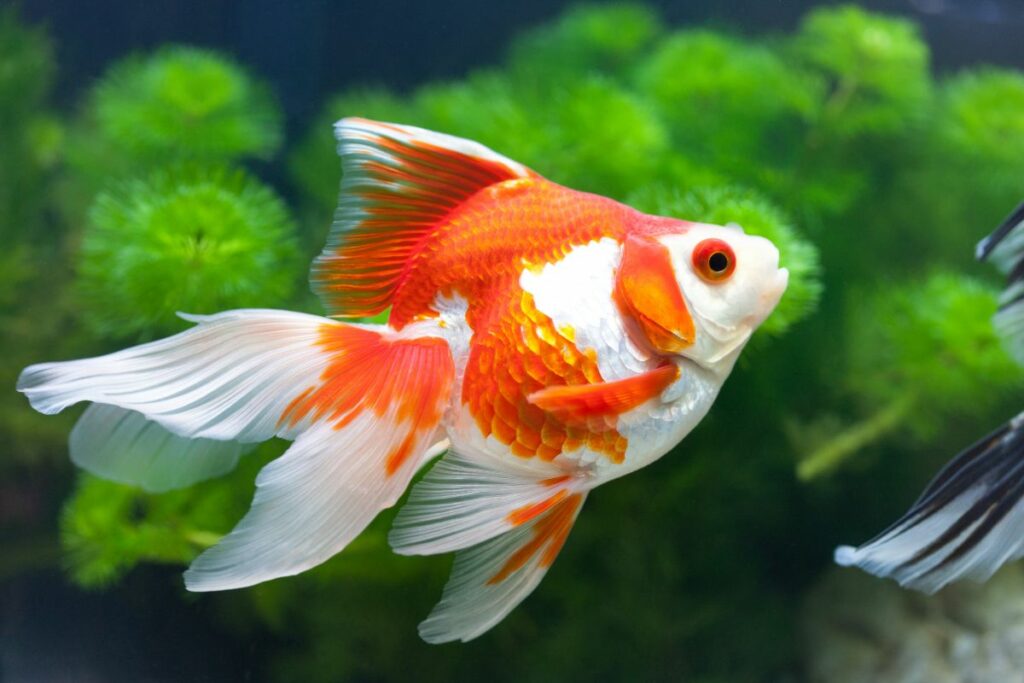
3. Signs of Stress or Aggression
- Goldfish Squabbles: On rare occasions, goldfish might chase or nip at each other. This can be due to territorial disputes or competition for food.
- Recognizing Stress: Hiding, clamped fins, or erratic swimming can be signs of stress. Continuously monitor interactions, especially when introducing new tank mates.
- Safe Spaces: Providing ample hiding spots, like plants and caves, can help reduce stress and territorial disputes.
4. Size Considerations
Any addition of tank mates should be accompanied by a consideration of tank size. Overcrowding can lead to poor water quality and increased competition for resources.
5. Quarantining New Fish
- Avoiding Disease Spread: Always quarantine new additions for 2-4 weeks. This ensures they don’t introduce any diseases or parasites into the main tank.
- Introducing tank mates to your goldfish aquarium can be a rewarding experience, adding layers of complexity and intrigue to your aquatic setup. However, the key is to always prioritize the well-being of all inhabitants.
Breeding & Reproduction
Witnessing the miracle of life within your aquarium is a thrilling experience for any fish enthusiast. Goldfish, with their graceful dances and rituals, make the process especially fascinating. If you’re considering breeding your goldfish, here’s what you need to know:
1. Recognizing Male and Female Goldfish
Males typically have a more streamlined body, while females appear rounder, especially during breeding season. Males might also develop tiny, white tubercles (often called breeding stars) on their gills and pectoral fins. During courtship, males often chase females around the tank.
2. Creating the Right Environment for Breeding
A slight drop in temperature followed by a gradual increase can simulate the seasonal change that triggers spawning in the wild. Dense plants or specific spawning mops provide an area for the female to lay her eggs and for males to fertilize them.
3. Spawning Behavior
Males will often chase the females, nudging them to encourage egg release. A female can lay hundreds to thousands of tiny, sticky eggs, attaching them to plants and other surfaces within the tank.
4. After Spawning: Protecting the Eggs
Goldfish, including the parents, may eat the eggs. Consider moving the adults to a different tank or using a breeding tank for the process. Some unfertilized eggs might develop fungus. Using methylene blue or specialized anti-fungal treatments can help.
5. Rearing Goldfish Fry
In about 4-7 days, depending on the temperature, the eggs will hatch. Initially, they’ll feed on their yolk sac. Once they start swimming, offer infusoria or liquid fry food. As they grow, you can introduce finely crushed flake food or baby brine shrimp.
Maintain pristine water conditions. Frequent small water changes can help in keeping the water clean without shocking the delicate fry.
6. Watching Them Grow
Goldfish fry usually don’t display their final colors immediately. It can take several weeks to months before their true colors start to shine. As they grow, there might be significant size variations. Consider separating larger fry from smaller ones to ensure even food distribution.
Frequently Asked Questions
Can goldfish live with other fish species?
Yes, they can, but it’s essential to choose non-aggressive species that thrive in similar water conditions. White Cloud Mountain Minnows, Zebra Danios, and Bristlenose Plecos are some compatible options.
How can I enhance my goldfish’s color?
Offering a varied, balanced diet rich in carotenoids (like spirulina, shrimp, and certain vegetables) can help. Quality commercial foods often contain color enhancers as well
What should I do if my goldfish seems unwell?
First, test the water parameters to ensure the environment is optimal. Then, look for specific symptoms to diagnose potential illnesses. Depending on the issue, you may need to adjust tank conditions, change the diet, or use specific treatments.
How big can goldfish get?
Depending on the variety, goldfish can grow anywhere from 6 inches to over a foot in length. Common goldfish are known to grow quite large, especially in pond environments.
Conclusion
Goldfish care, while intricate, is deeply rewarding. By ensuring the right environment, diet, and attention to their well-being, you can enjoy the company of these vibrant and lively creatures for many years.
As with all pets, understanding and patience are the keys to a fulfilling companionship. Dive into this journey with dedication, and the joys of goldfish keeping will undoubtedly unfold before you.






